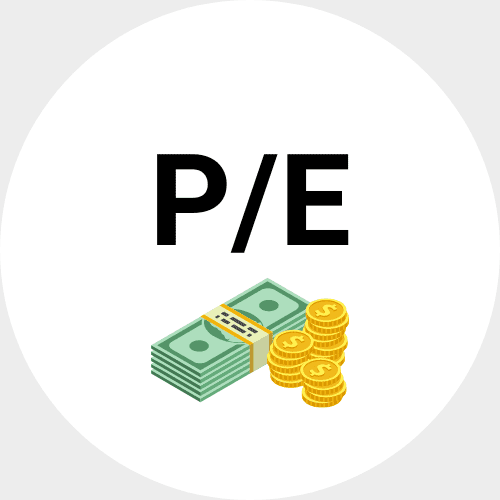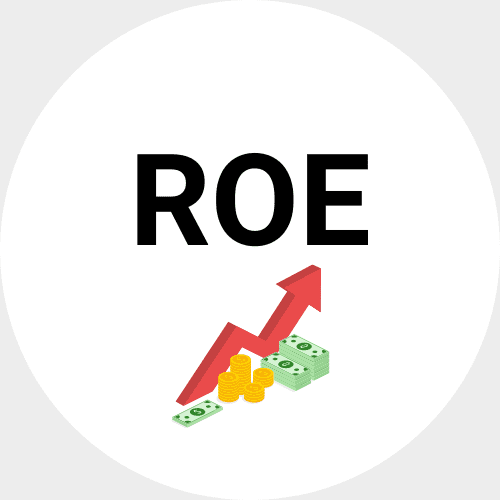So you want to make money in stocks? The stock market in the Philippines can be a great way to grow your money.
But it’s important to know how to invest in the stock market if you want to see a return on your investments. Here are a few tips when investing in the Philippine stock market.
Table of Contents
How to Invest in the Stock Market
Investing in the stock market is simple. Follow these nine steps and you’ll be headed in the right direction.
Step 1: Do your research
Stock investment involves research. Understand what you’re buying and look at the company’s financials, its competitive landscape, and its long-term prospects. Here’s what to look for in a company’s financials.

Earnings per Share (EPS)
Earnings per share is a metric that shows how profitable is the company based on how much it earned in revenue for each share of stock. The earnings are divided by the number of shares outstanding, which equals EPS.

Price to Earnings Ratio (P/E)
The P/E ratio is a measure of how many times the company’s earnings have been divided by the current market price of your stock.

Debt to Equity Ratio (DE)
The DE ratio is a measurement of the amount of money that a company owes compared to the money it has in its bank account. To calculate this ratio, you take the total debt and divide it by the total equity.

Return on Equity (ROE)
The ROE is a metric that shows how much profit the business has generated per each dollar of equity it has. To calculate, you take the earnings per share and divide it by total equity.

Gross Margin (GM)
The GM is a number that shows how much money a company makes in the sales of its products. To calculate, you take the revenue and subtract the cost of goods sold.

Operating Margin (OPM)
The OPM is a metric that shows how much money a company makes for every dollar it spends on operating expenses. To calculate, you take the operating income and subtract the operating expenses.
Step 2: Understand your Risk Tolerance
There are two types of investors in the stock market: Those who are risk-tolerant and those who aren’t.
To be successful when investing in stocks, you need to be risk-tolerant. This doesn’t mean that you should go out and buy risky stocks without doing your research, but it does mean that you shouldn’t avoid them either.
You also need to be able to stomach the ups and downs as stock trading is considered to be a volatile market.
Step 3: Decide What Type of Investor You Are
If you are a regular everyday investor, it’s best to invest in a mutual fund that follows the same strategy as your investments. If you are more of an active trader, then you should do some research on the stock and decide whether you buy or sell more shares.
Related post: Best Mutual Fund Companies in the Philippines
Eight Types of Investors
- Passive Investor: This type of investor will hold on to his investments for a very long time. He or she will not do much more than just hold their stocks, and they will only sell their stocks when the price drops below their purchase price. This type is for long-term investing.
- Active Investor: This type of investor will actively try to make profits from his or her investments on a short-term basis. He or she will look at the stocks daily buying the stocks based on their current price, what the market is doing, or to take advantage of quick gains or certain trends.
- Fundamental Investor: This type of investor will do research into the stocks he or she is considering buying. He or she may want to find out how a company makes its money, its economic situation, and what it does with the money it earns.
- Technical Investor: This type of investor will use technical analysis to make investment decisions. He or she may use charts and graphs to determine when a stock is going up or down.
- Buy and Hold: This is a strategy that investors with long-term investment goals use. They can buy and hold stocks for several years or until the market collapses. After buying, they will not sell the stock unless there are very good reasons to do so.
- Short Seller: This type of investor is never satisfied with the status quo. He or she will sell a stock even if it is rising in value. The person selling the stock may look to profit from the decline in the value of the stock.
- Margin Trader: This type of investor is called a “day trader” because he or she does not hold any stocks for a long time. In day trading, he or she will buy and sell stocks frequently. It is more like trading on margin than holding a position.
- Pump and Dump: This type of investor buys a high-priced stock, and then sells it to other investors at a much lower price. The new owners think that the stock is undervalued and will sell it for a profit. The original owner sells his or her shares at a higher price and pockets the profit.
Step 4: Choose the right broker
The most important factor in determining how much you should be investing is the broker. You want to choose a firm that has a strong trading history, which also cares for its investors’ funds, and has been around for a long time. You may also refer to our list of the best stock brokers in the Philippines.
Step 5: Consider Investing in Index Funds
Index funds are funds that track the performance of a particular stock, bond, or commodity index. The best way to select an index fund is to choose one that tracks the same index as your investments.
An index fund is a type of mutual fund with a portfolio constructed to match or track the components of a market index, such as the PSE. An index may be composed of stocks, bonds, or other securities.
These funds are passively managed, meaning their managers aim to replicate the performance of an index rather than trying to beat it. This approach results in lower costs and taxes, which makes it more attractive to investors.
Step 6: Understand how Dividends work
Dividends are an important part of any company’s financials. This is because dividends allow you to make money on your investment without having to take a risk. They also provide a steady stream of income to your portfolio, which can help keep your portfolio growing over the long term.
Dividends are payments made by companies to their shareholders from their profits. A company can either pay a dividend in cash or additional shares.
When a company pays a dividend in cash, the shareholder receives a check or electronic transfer from the company. When a company issues new shares as a dividend, the shareholder receives additional shares in the company.
There are two types of dividends: regular and special. A regular dividend is paid on a set schedule, such as quarterly or annually. A special dividend is paid outside of the regular schedule, often in response to the good news about the company, such as an increase in profits.
Dividends are an important source of income for many investors. They provide a steady stream of income that can be used to pay for living expenses, reinvest in other assets, or simply saved for retirement.
Step 7: Diversify your Portfolio
Don’t put all your eggs in one basket. Invest in a variety of stocks across different industries so that if one stock performs poorly, you won’t lose all your money.
Types of Industries in the Stock Market
- Technology
- Healthcare
- Energy
- Industrials
- Consumer Discretionary
- Financials
Step 8: Use Peso Cost Averaging (PCA)
When you Peso-cost Average, you purchase shares of a stock over time instead of all at once. This helps reduce the risk of buying shares at a high price point.
Peso-cost Averaging is a time-tested investment strategy that can help investors mitigate the risk of buying stocks at inopportune times. By investing a fixed amount of money into a particular stock or stock market index on a regular basis, you reduce the effects of sporadic changes (up or down) in the price of the security on your portfolio.
In other words, by buying shares over time, the average cost per share will be less than if the investor had purchased all of their shares at once.
This approach is often recommended for new investors who may be uncertain about when to buy and sell stocks. By buying into the market over time, they are essentially “averaging out” their purchase price and reducing their exposure to potential losses.
Step 9: Be Patient
The best thing about investing is that it takes time for your money to grow. It is important to remember that the market can go up or down on any given day. The best investors are those who understand this and act accordingly. If you wait ten years, your money will have grown by an average of 10% per year.
Final Thoughts
Some investors believe that the market will always go up. They buy stocks on a tip from a friend, a hot tip from a stock “prophet”, or even the latest “hot” stock that everyone is talking about. But what if they are wrong?
In the long run, the market is a very good place to invest money. But it is not perfect and you should always keep in mind that there are no sure things when it comes to investing.



